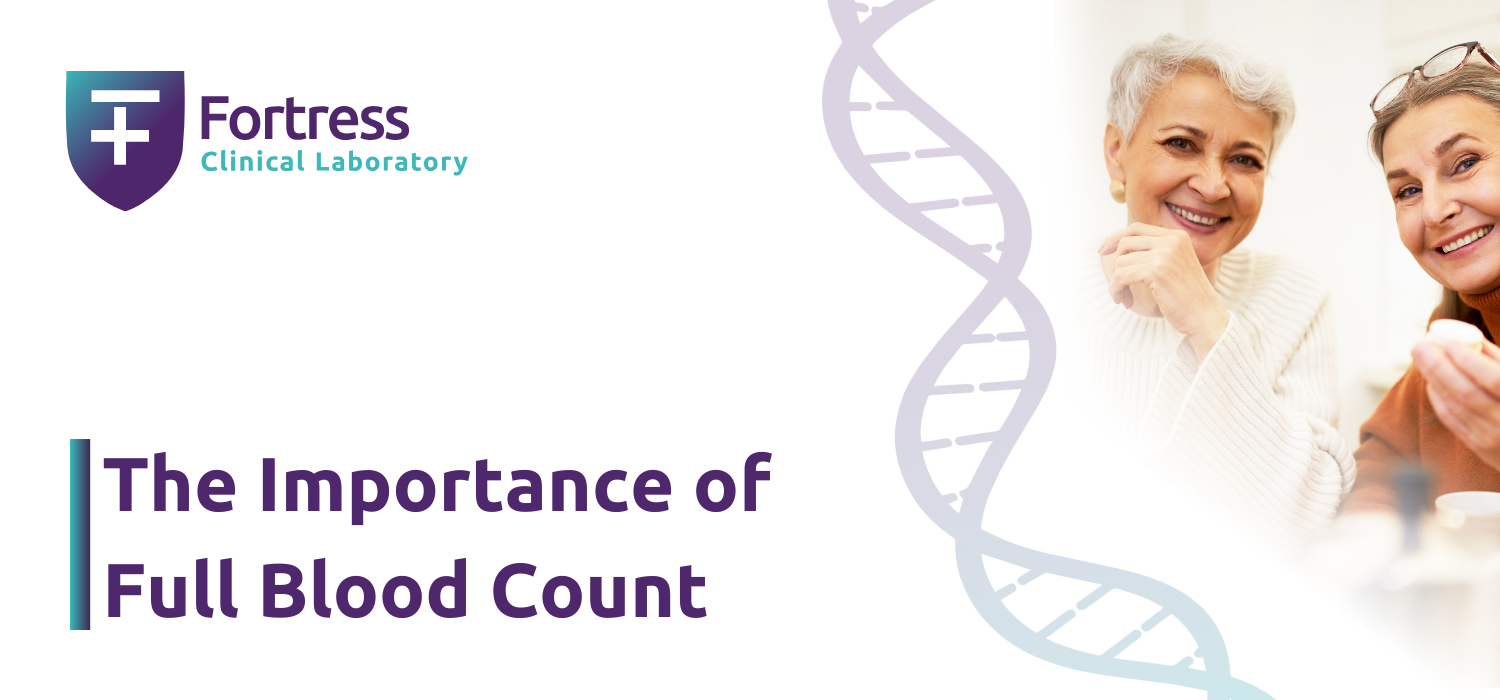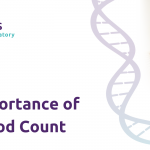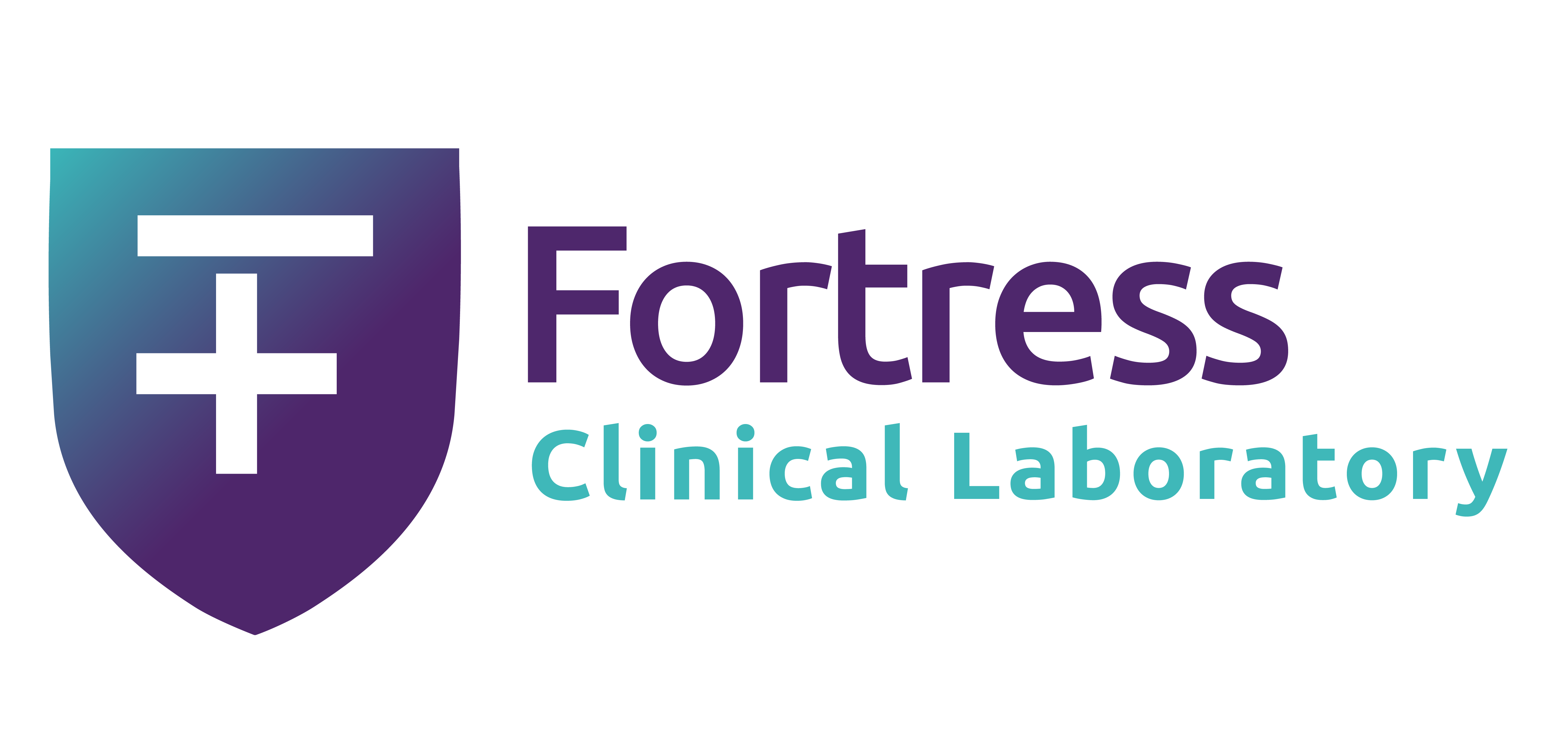
The Importance of Full Blood Count
The Importance of Full Blood Count
This February, Fortress Clinical Diagnostics (FCL) are focusing on full blood count (FBC), a common routine test which looks at the various components in the blood: platelets, red blood cells (RBC) and white blood cells (WBC). An abnormality in any of these types of cells can indicate a medical disorder 1.
Blood Components & Their Importance
Our blood is made up of four key components: plasma, platelets, red blood cells (RBC) and white blood cells (WBC).
Plasma
Plasma is the liquid component of blood and is a mixture of fat, protein, salts, sugar and water. Plasma is responsible for the transportation of various substances throughout the body, including: antibodies, blood cells, clotting proteins, hormones, nutrients and waste products 2.
Red Blood Cells (RBC)
Red blood cells (RBCs), also known as erythrocytes, represent 40-45% of blood volume and looks a little like a donut. RBCs responsible for the transportation of oxygen around the body. RBCs are rather unique as they are the only cell in the body that does not have a nucleus which allows them to be more flexible so that they can fit through small blood vessels. The downside is that RBCs have a reduced lifespan of only 120 days 2.
White Blood Cells (WBC)
White blood cells (WBCs), also known as leukocytes, represent 1% of blood volume. WBCs are responsible for protecting the body from infection. There are two major types of WBC 2s:
- Neutrophils are the most abundant WBC, accounting for 55-70% of total WBC count. They are one of the ‘first responders’ to the site of infection or inflammation. They live for less than one day, so your bone marrow must constantly make new neutrophils to maintain protection against infection 2.
- Lymphocytes:
- T lymphocytes help regulate the function of other immune cells and directly attack various infected cells and tumours 2.
- B lymphocytes make antibodies, which are proteins specifically designed to target bacteria, viruses and other foreign materials 2.
Platelets
Unlike RBS and WBC, platelets are small fragments of cells. Platelets are involved in the blood clotting process, also known as coagulation, by gathering at the site of the injury and sticking to the lining of the injured blood vessel. This clot covers the wound and stops the blood from leaking out. Eventually this scabs as the wound begins to heal, a process we all have witness at throughout our lives 2.
Higher than normal platelets can cause unnecessary clotting, which can lead to heart attack and stroke. Whereas, lower than normal platelets means that a clot cannot form, leading to extensive bleeding 2.
What’s Included In The Full Blood Count Assessment?
- Now that we understand the components of blood and their importance a little better, let’s dive further into the FBC test. The FBC test is a broad screening tool to check for many different illnesses and diseases. The FBC test is a panel of several tests which examines different parts of the blood and dives further into three of the main components 3:
- White blood cell (WBC) count – We looked at the role of WBCs about, the WBC count examines the actual number of WBC present in the volume of blood drawn. Both an increase and a decrease in the actual number of WBCs can be significant to health 3.
- WBC differential – We looked at some of the main WBCs responsible for protecting our bodies from infection, but there are actually five different types of WBC, each with their own functions to help protect and fight against infection: basophils, eosinophils, lymphocytes, monocytes and neutrophils. All five WBC differentials are tested 3.
- Red blood cell (RBC) count – We looked at the role of RBCs above, the RBC count examines the number of RBCs in the volume of blood drawn. Both an increase and a decrease in the actual number of RBCs can be significant to health 3.
- Haemoglobin – Haemoglobin is the protein found in RBCs and is responsible for carrying oxygen around the body. Testing for haemoglobin measures the amount of haemoglobin present in RBCs 3.
- Haematocrit – Whilst the RBC count measures the number of RBCs in the volume of blood, the haematocrit tests measures the amount of space RBCs take up in the blood, both the number and the size of the RBCs 3.
- Platelet count – We looked at the role of platelets above. The platelet count examines the actual number of platelets in the volume of blood drawn. Both increases and decreases can be significant to health and can point towards bleeding or bone marrow disorders 3.
- Mean corpuscular volume (MCV) – A measurement of the average size of the RBCs. It is elevated when RBCs are bigger than they should be, known as macrocytic. Elevated MCV is commonly seen in folic deficiency anaemia. On the flip side, RBCs that are smaller than they should be (microcytic) causes a decrease in MCV, which is commonly seen in iron deficiency anaemia and inflammation 3.
- Mean corpuscular haemoglobin (MCH) – A calculation of the amount of haemoglobin inside RBCs. Larger than normal RBCs (elevated MCV as mentioned above) carry more haemoglobin and so have a higher MCH value 3.
- Mean corpuscular haemoglobin concentration (MCHC) – A calculation of the concentration of haemoglobin inside the RBCs. Haemoglobin is abnormally diluted inside RBCs in iron deficiency anaemia, long-standing inflammation or thalassaemia, decreasing MCHC values, also known as hypochromia. On the flip side, abnormally concentrated haemoglobin concentrations inside RBCs are observed in autoimmune spherocytosis, increasing MCHC values, also known as hyperchromia 3.
What Do The Results Mean?
| What do full blood count results mean 4 | ||
| Test | Result | Meaning |
| Red Blood Cell Count
Haemoglobin Haematocrit (The results of these three are related as all related to the RBC) |
Low | Lower than normal in all three tests are a sign of anaemia. Anaemia has many causes:
· Low vitamins · Low iron · Blood loss · Another medical condition Symptoms · Weakness · Tiredness Can be the result of anaemia itself or the cause of anaemia. |
| High | RBC count that is higher than normal is called erythrocytosis. If any of the three tests are high, it can be the result of a medical condition, such as:
· Blood cancer · Heart disease |
|
| White Blood Cell Count | Low | WBC count that is lower than normal is called leukopenia. Causes include:
· Autoimmune disorders that destroy WBCs · Bone marrow problems · Cancer · Certain medications |
| High | Causes:
· Infection · Inflammation · Immune system disorder · Bone marrow disease · Reaction to medication · Hard exercise |
|
| Platelet Count | Low | Platelet count that is lower than normal is called thrombocytopenia. |
| High | Platelet count higher than normal is called thrombocytosis. | |
For Physicians & Clinicians
We aren’t going to tell you the importance of the FBC. We know you understand the value of this test a broader screening tool before diving into the specifics, or the value of this test in the preoperative setting to aid in the decision making at the perioperative stage 5. But rather, we would like to highlight the FCL FBC product offering.
| FCL Full Blood Count Panel | ||
| Basophil Count | Eosinophil Count | Haemoglobin |
| Haematocrit | Lymphocyte Count | Mean Cell Haemoglobin |
| Mell Cell Haemoglobin Concentration | Monocyte Count | Neutrophil Count |
| Platelet Count | Red Blood Cell Count | Red Blood Cell Mean Volume |
| White Blood Cell Count | ||
References
- Better Health Channel. Blood count. https://www.betterhealth.vic.gov.au/health/conditionsandtreatments/blood-count (accessed 31 January 2024).
- American Society of Hematology. Blood Basics. https://www.hematology.org/education/patients/blood-basics (accessed 31 January 2024).
- Labs Tests Online. Full Blood Count (FBC). https://labtestsonline.org.uk/tests/full-blood-count-fbc (accessed 1 February 2024).
- Mayo Clinic. Complete blood count (CBC). https://www.mayoclinic.org/tests-procedures/complete-blood-count/about/pac-20384919 (accessed 2 February 2024).
- NICE Guidelines. Preoperative Tests (Update): Routine Preoperative Tests for Elective Surgery. https://www.ncbi.nlm.nih.gov/books/NBK367882/ (accessed 1 February 2024).






